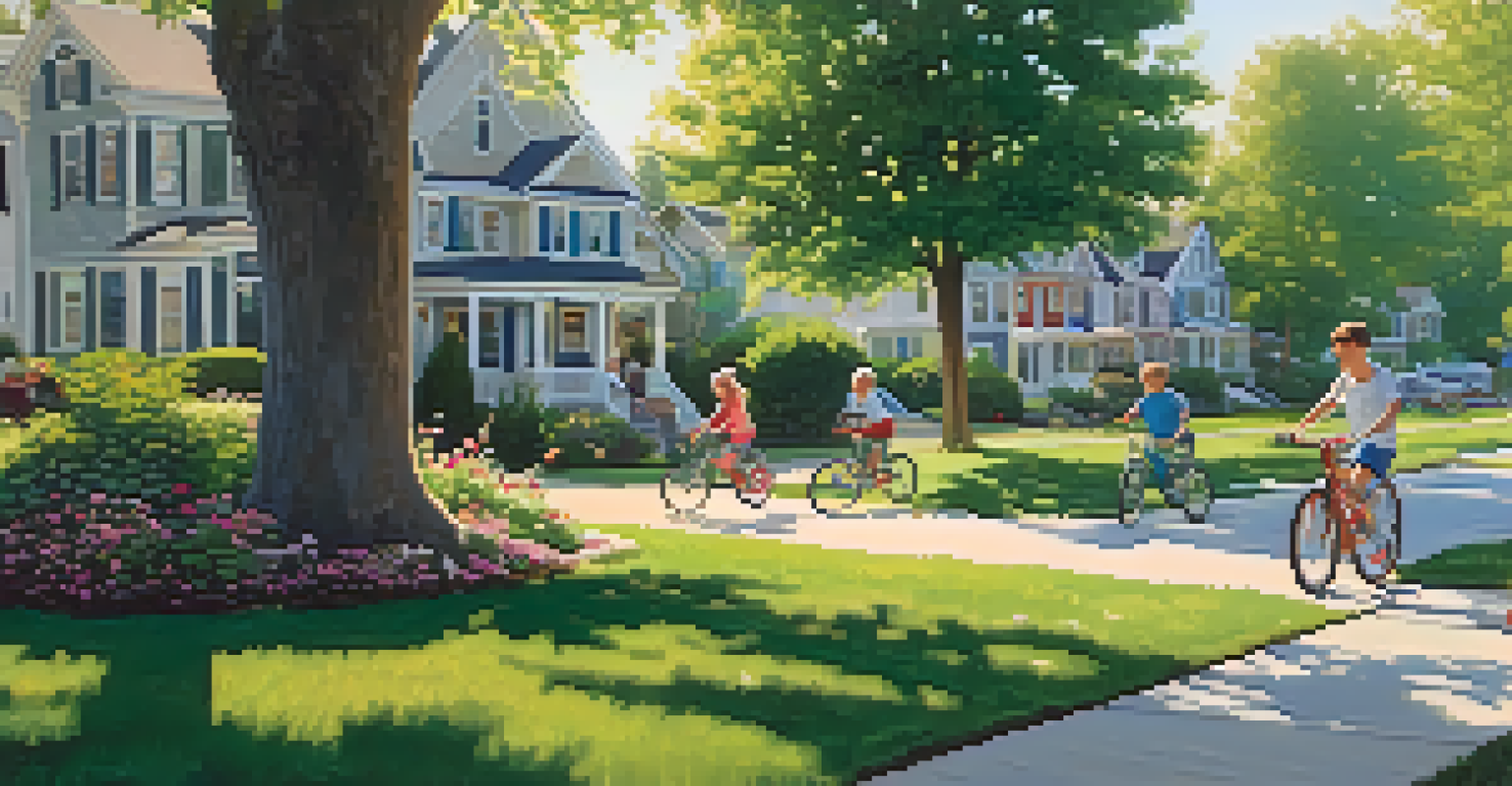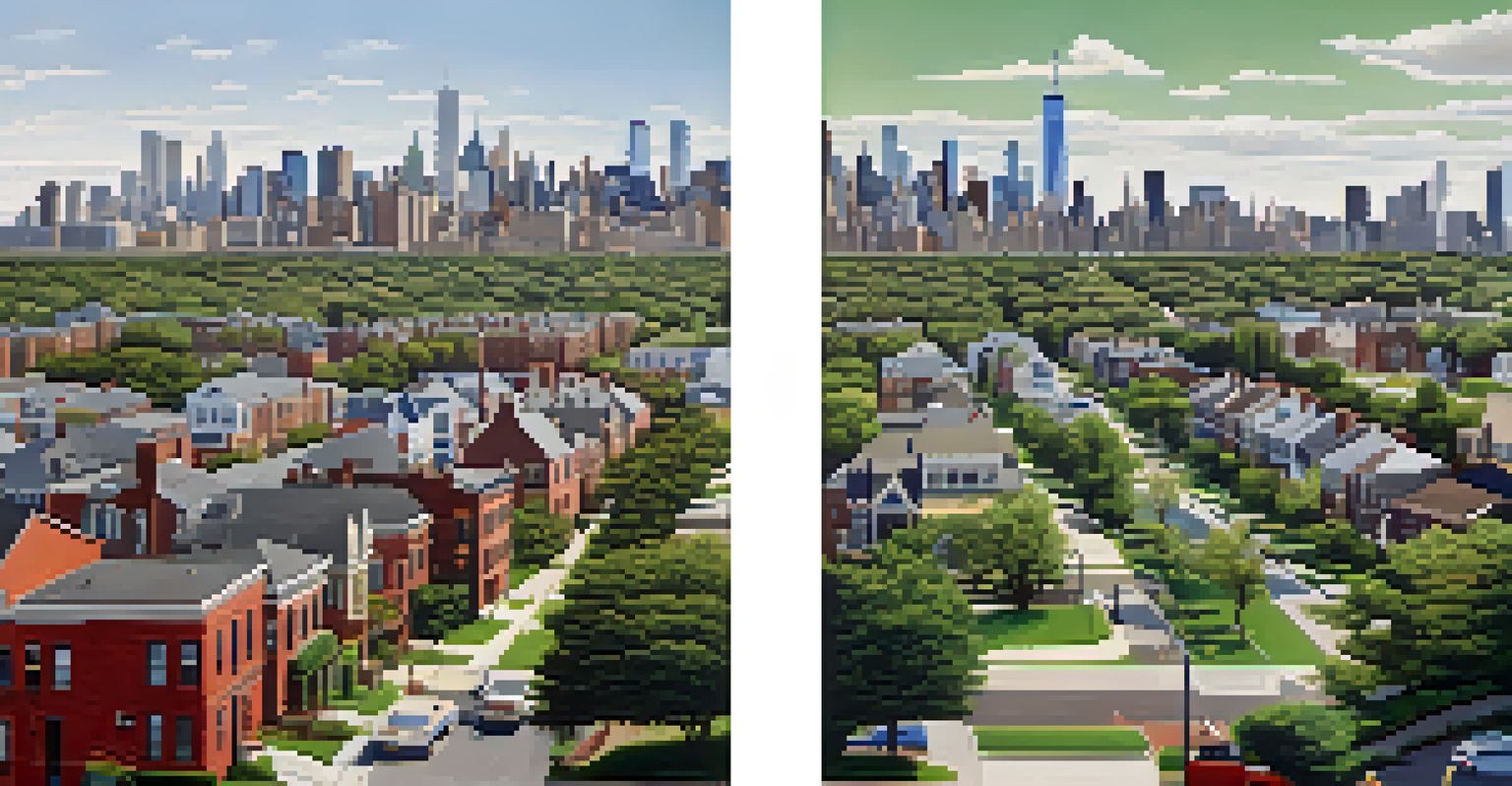Housing Affordability: NYC vs. Suburban Areas Post-Migration

Understanding Housing Affordability in NYC
Housing affordability in New York City has long been a topic of concern. With skyrocketing rents and a competitive market, many residents find it increasingly difficult to secure an affordable place to live. The city’s unique blend of culture, job opportunities, and amenities often comes at a steep price, leading many to question whether the benefits outweigh the costs.
The best way to predict the future is to create it.
In recent years, the pandemic has intensified these challenges, prompting many New Yorkers to reevaluate their housing situations. With remote work becoming more prevalent, some are choosing to leave the city for more affordable options elsewhere. This shift has not only affected individual lives but has also influenced the dynamics of the real estate market in NYC.
As we delve deeper into housing affordability, it’s essential to consider the various factors at play, including income levels, housing supply, and local policies. Understanding these elements helps contextualize the ongoing migration trends and sets the stage for comparing NYC with suburban areas.
The Impact of Migration on Housing Demand
Migration patterns have a profound impact on housing demand, especially in urban areas like NYC. As people seek greener pastures, often fueled by the desire for more space and a lower cost of living, demand in suburban areas has surged. This sudden shift can lead to increased competition for housing, driving prices up in these once-affordable markets.

Conversely, NYC has seen a slight decline in demand as some residents leave for the suburbs. While the city remains an attractive place for many, the outmigration reflects a desire for a different lifestyle, particularly among families and remote workers. This change in demand dynamics can create a ripple effect on pricing and availability in both urban and suburban settings.
NYC Housing Affordability Crisis
Skyrocketing rents and a competitive market make it increasingly difficult for New Yorkers to find affordable housing.
Understanding these migration trends is crucial for anyone interested in housing affordability. By analyzing where people are moving and why, we can better grasp how these shifts impact the broader housing market and what that means for potential buyers and renters.
Comparing Housing Costs: NYC vs. Suburbs
When comparing housing costs between NYC and suburban areas, the differences are stark. In NYC, the average rent for a one-bedroom apartment can easily exceed $2,500, while in many suburban areas, similar accommodations may cost around $1,500 or even less. This disparity highlights the financial strain that urban living can impose on residents, particularly those with modest incomes.
Home is the starting place of love, hopes, and dreams.
Moreover, the price of purchasing a home follows a similar trend. The median home price in NYC can be prohibitively high, whereas suburban homes often offer more space and amenities for a fraction of the cost. This affordability factor is a significant draw for those considering a move outside the city, particularly as remote work allows for greater flexibility.
However, while the suburbs may offer more affordable options, it’s essential to consider other costs associated with suburban living, such as transportation and commuting. These additional expenses can sometimes offset the savings on housing, making it vital for individuals to evaluate their overall budget when making housing decisions.
Quality of Life: NYC vs. Suburbs
Quality of life is a crucial factor that influences housing decisions. NYC boasts unparalleled access to cultural events, dining, and social opportunities, which many residents cherish. The vibrancy of city life can be exhilarating, drawing people to its bustling streets and diverse neighborhoods despite the high living costs.
On the other hand, suburban areas offer a different lifestyle, often characterized by quieter neighborhoods, more space, and a strong sense of community. For families, this environment can be particularly appealing, providing a safe space for children to grow and play. The trade-off between the excitement of city life and the tranquility of the suburbs is a significant consideration for those contemplating a move.
Migration Shifts Housing Demand
As some residents leave NYC for more affordable suburban options, this shift is impacting housing demand and prices in both areas.
Ultimately, the choice between NYC and suburban living often comes down to personal preferences and priorities. Understanding what quality of life means to you can help determine which environment best suits your needs, especially in the context of housing affordability.
The Role of Local Policies in Housing Affordability
Local policies play a pivotal role in shaping housing affordability in both NYC and suburban areas. In New York City, rent control and stabilization laws aim to protect tenants from exorbitant rent increases, but these measures can also lead to a shortage of available units. Balancing tenant protections with the need for new housing developments is a complex challenge that city officials continue to face.
Suburban areas, on the other hand, may have different zoning laws and development incentives that encourage new construction. These policies can help alleviate housing shortages and keep prices more manageable. However, they can also lead to concerns about overdevelopment and the preservation of community character, sparking debates among residents and policymakers alike.
As we navigate the shifting landscape of housing affordability, understanding local policies is essential. These regulations not only influence the availability of housing but also impact the overall quality of life for residents, making them a crucial element in the affordability conversation.
The Future of Housing Affordability Post-Migration
Looking ahead, the future of housing affordability in both NYC and suburban areas remains uncertain. As migration trends continue to evolve, so too will the housing market dynamics. Factors such as economic recovery, job growth, and even climate change will likely influence where people choose to live and how much they are willing to pay for housing.
In the suburbs, increased demand could drive up prices if housing supply doesn't keep pace. This potential shift may create new challenges for those seeking affordable options outside the city. Meanwhile, NYC may see a stabilization of prices as the market adjusts to the new normal, offering opportunities for buyers who have previously been priced out.
Local Policies Shape Housing Market
Local regulations, such as rent control in NYC and zoning laws in suburbs, significantly influence housing availability and affordability.
Ultimately, staying informed about these trends is essential for anyone looking to navigate the housing market. Understanding how migration patterns and economic factors intersect can provide valuable insights into the future of housing affordability in both urban and suburban settings.
Final Thoughts on Housing Affordability Trends
In summary, housing affordability is a multifaceted issue influenced by various factors, including migration patterns, local policies, and personal lifestyle choices. The contrasts between NYC and suburban areas highlight the diverse experiences of residents navigating these challenges. As more individuals weigh their options, understanding the implications of these decisions can guide them toward better housing solutions.
While NYC offers unique opportunities and experiences, the suburbs present an attractive alternative for those seeking affordability and space. Each option has its pros and cons, and personal priorities will ultimately dictate the best fit. As we continue to observe these trends, staying adaptable and informed will be crucial for anyone looking to make a move.

Ultimately, whether in the city or the suburbs, the goal should be finding a place that feels like home. With patience and research, it’s possible to navigate the evolving landscape of housing affordability and make choices that align with your lifestyle and budget.